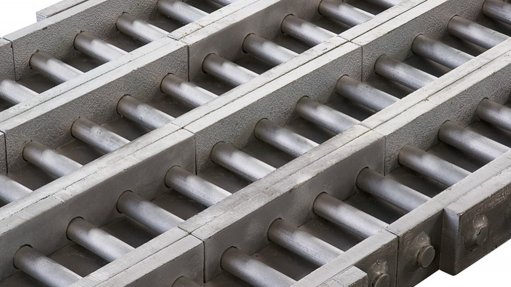
TECHNOGRID These strain energy absorption devices provide predictable impact energy absorption outcomes with controlled deceleration and predicted reaction forces
Local conveyance safety solutions provider Horne Group has been awarded orders for several Technogrid cage arrestors for use at mines in Canada.
Horne Group received an order in March to start engineering design work on Technogrid cage arrestors for use on the headgear and at the bottom of the main shaft at diversified miner BHP Billiton’s Jansen mine, a greenfield potash project under development in the Saskatchewan potash basin, in Canada.
The Jansen project is in the feasibility study stage and can potentially become one of the world’s premier potash mines and provide a platform for a significant and scalable potash business for BHP Billiton.
The order for this design follows another order placed in February to deliver Technogrids for the mine’s service shaft.
While Horne Group has completed the design of the Technogrids, delivery is scheduled only for 2016 or 2017. “We are, therefore, only likely to begin manufacturing in 2016,” says Horne Group sales and marketing VP and Canada operations GM Stephen Hill.
Meanwhile, potash and phosphates producer Mosaic placed an order for Technogrids late last year. The Technogrids, which have been delivered to site, will be installed at Mosaic’s K3 shaft at the Esterhazy Mine, also in Saskatchewan.
The K3 shaft is expected to add one-million tons a year to Esterhazy’s existing potash capacity of 5.3-million tons a year, the largest of any potash mine worldwide.
One hundred Technogrid units have been ordered, with another 50 still to be ordered at a value of about $1-million, says Hill.
These strain energy-absorption devices provide predictable impact energy absorption outcomes, with controlled deceleration and predicted reaction forces, which prevents costly damage to equipment and surrounding infrastructure.
The system functions by absorbing a moving body’s kinetic or potential energy through deformation of a metal grid comprising a series of multi-bar units connected in a staggered pattern. Upon impact, the grid allows for the metal bars to yield and deform under double-curvature bending, opening up and absorbing the impact energy through strain hardening.
The Technogrids are not only used for arresting mine cages in overwind or underwind conditions in the mining industry but also act as a safety net against a wide range of motion energy impacts in various applications.
Technogrids are easy to install, maintenance free and can absorb any impact as long as the catch framework is designed to put the grid into tension.
Individual Technogrid units can be designed to absorb energies from 24 kJ to more than 40 000 kJ, and impact speeds of up to 120 km/h.
Safe deceleration and high-end forces can be calculated for a wide range of energies, ensuring optimum unit configuration for a specific application by combining the grids in series or in parallel according to the requirement and space constraints.
Hill says the three Canadian orders for Horne Group’s Technogrid product are significant in a global market currently characterised by diminished demand.
“Competition for the three orders was fierce and, in the case of Mosaic, Technogrids were ordered in preference to existing alternative arresting systems installed in Esterhazy’s existing shafts,” he adds.